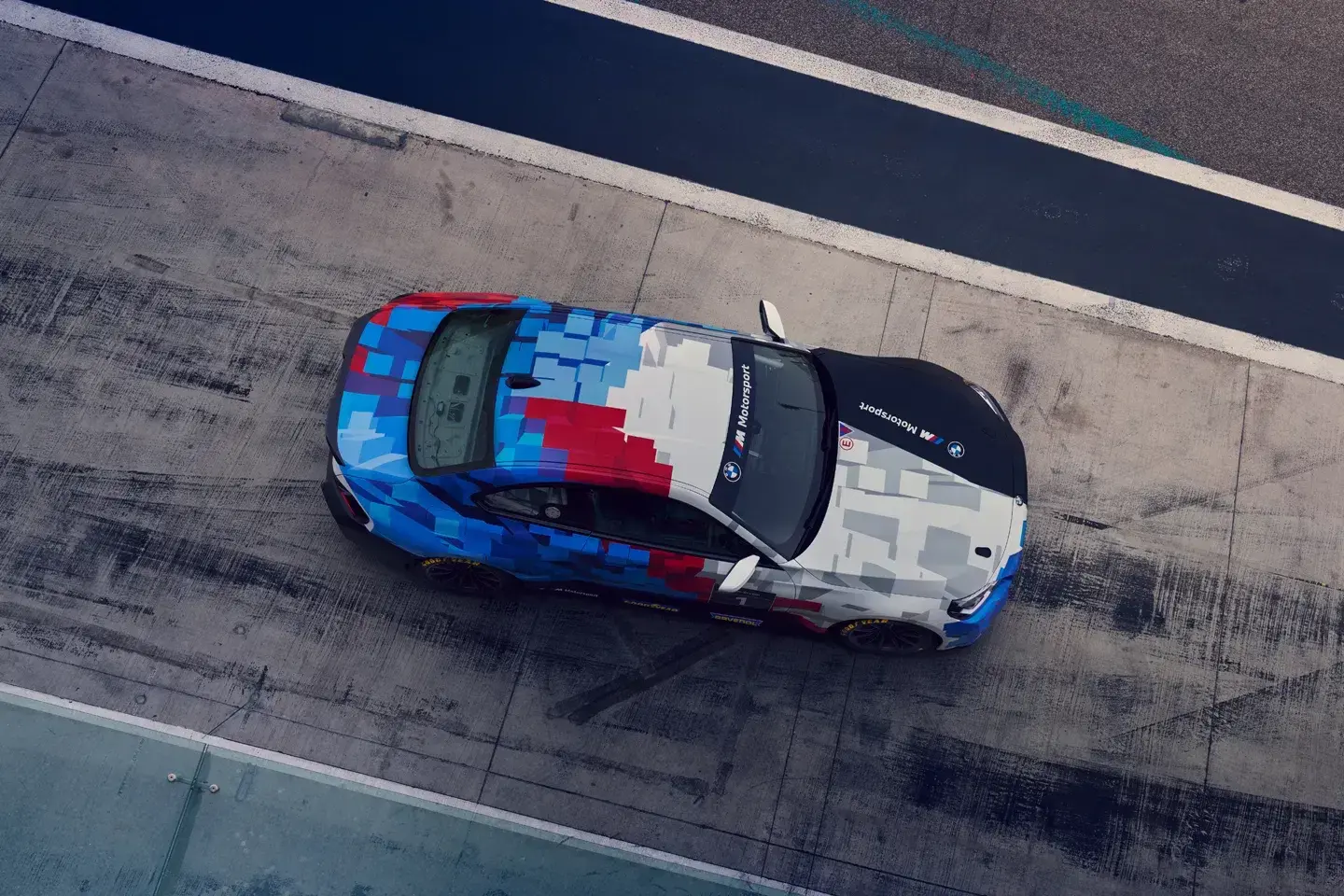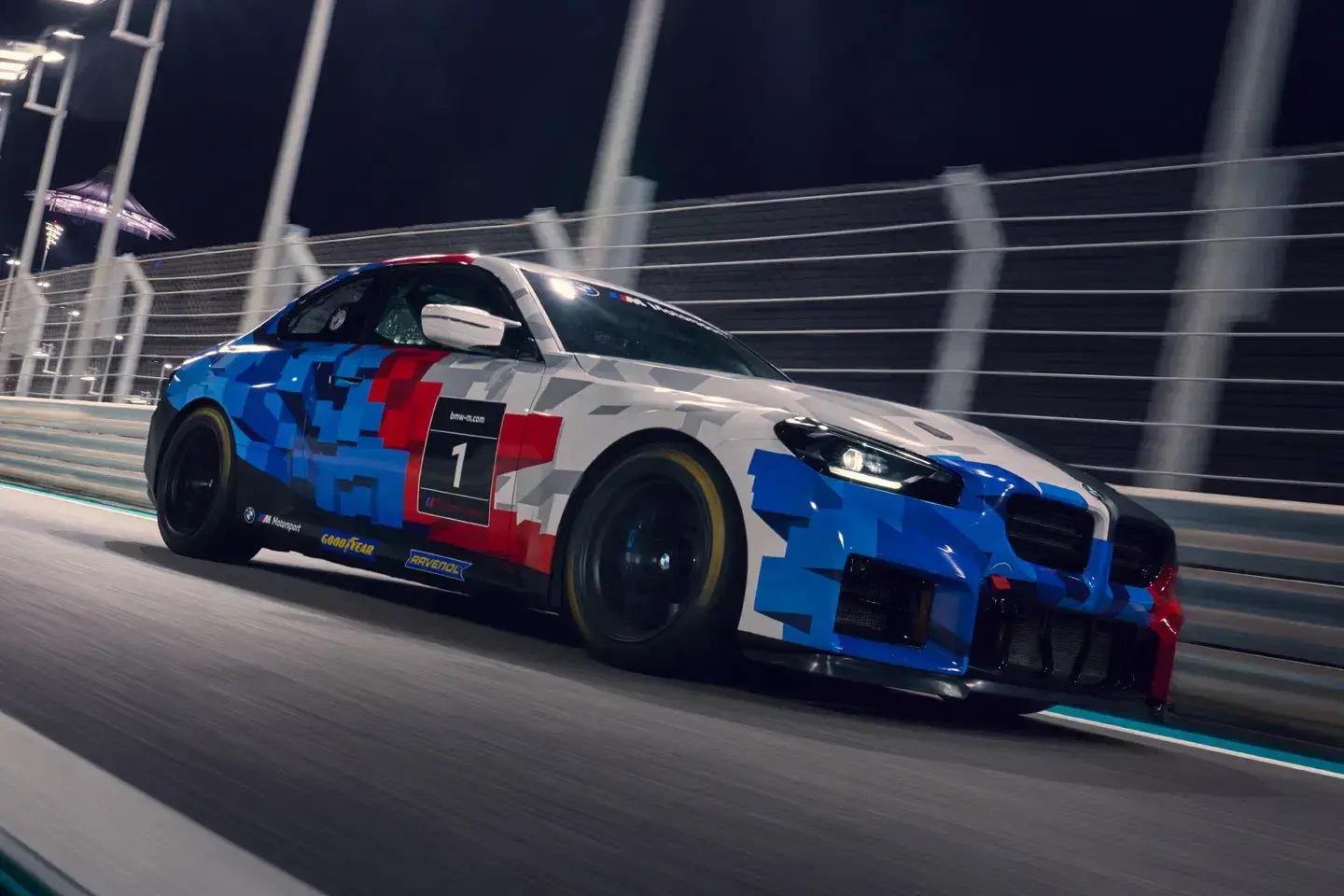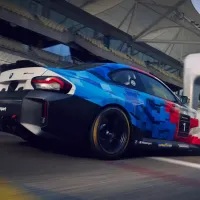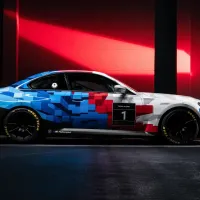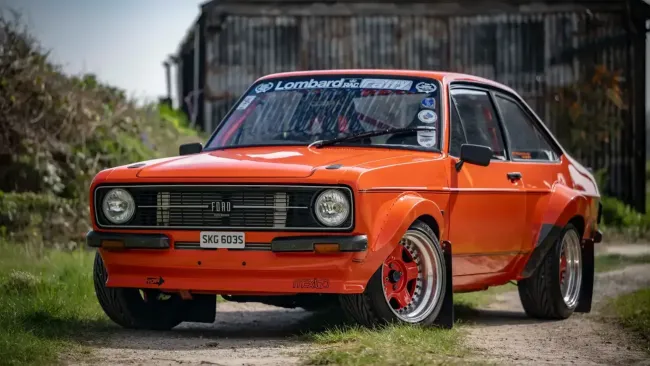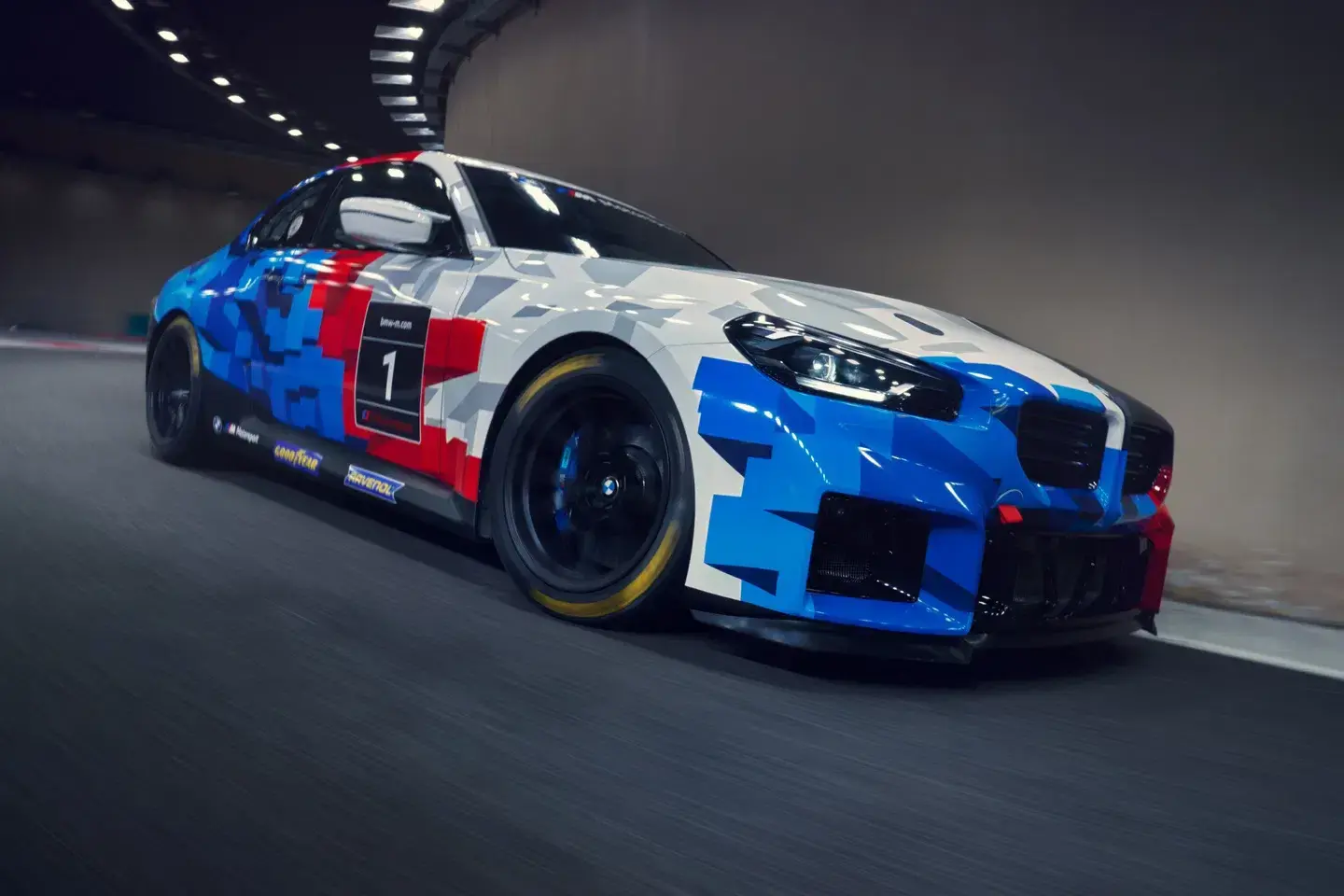 BMW’s latest M2 has quickly won the hearts of enthusiasts worldwide, and it’s easy to see why. With its classic formula of a compact, rear-wheel-drive coupe, it taps deep into BMW M’s rich heritage. It also stands out in today’s market as a rare nod to old-school, combustion-powered excitement, and much of its character comes from the potent 480-horsepower S58 straight-six under the hood. Strip that engine away, and you remove a vital piece of the magic.
BMW’s latest M2 has quickly won the hearts of enthusiasts worldwide, and it’s easy to see why. With its classic formula of a compact, rear-wheel-drive coupe, it taps deep into BMW M’s rich heritage. It also stands out in today’s market as a rare nod to old-school, combustion-powered excitement, and much of its character comes from the potent 480-horsepower S58 straight-six under the hood. Strip that engine away, and you remove a vital piece of the magic.
So, when BMW announced its newest and most affordable race car—the 2025 BMW M2 Racing—would ditch the beloved 3.0-liter inline-six in favor of a smaller 2.0-liter four-cylinder, some fans understandably raised an eyebrow. However, there’s much more to the story.
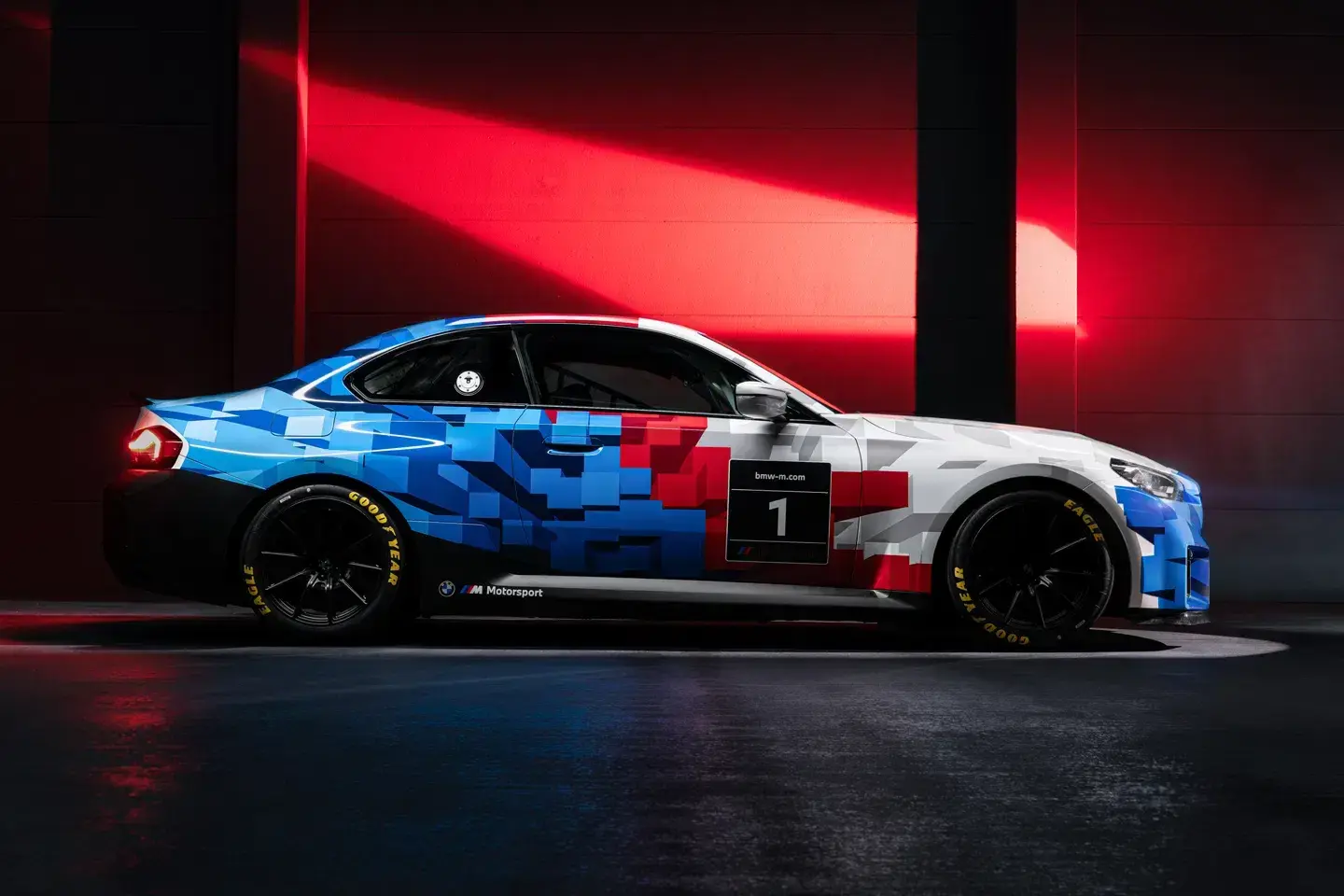 Unveiled during the DTM season opener and slated for a June 2025 sales launch, the BMW M2 Racing is designed specifically for private customer teams. Starting at €98,000 (excluding VAT) in Europe, it will be available exclusively through select BMW M Motorsport dealers.
Unveiled during the DTM season opener and slated for a June 2025 sales launch, the BMW M2 Racing is designed specifically for private customer teams. Starting at €98,000 (excluding VAT) in Europe, it will be available exclusively through select BMW M Motorsport dealers.
Frank van Meel, head of BMW M, described the car as a game-changer for the entry-level racing segment: “The new BMW M2 Racing makes motorsport more accessible without sacrificing performance, durability, or the joy of driving. Our goal at BMW M Motorsport is to deliver customer race cars that are affordable, easy to maintain, and thrilling on track."
Built at BMW’s San Luis Potosí plant in Mexico—the same facility that produces the road-going M2—the M2 Racing comes FIA-compliant right out of the box. It features a full roll cage, a pre-assembled drivetrain, and a motorsport-tuned chassis. Highlights include custom KW dampers, adjustable anti-roll bars, uprated brakes, 18-inch forged wheels finished in matte black, and motorsport-specific driving modes.
Visually, the M2 Racing sports a lightweight CFK (carbon fiber-reinforced plastic) roof, a new aerodynamic front splitter, and Makrolon rear side windows with an integrated quick-fill fuel port. Underneath the race-ready hood, secured with quick-release locks, sits a turbocharged 2.0-liter four-cylinder engine derived from BMW’s B48 unit. Paired with a seven-speed ZF automatic gearbox and a mechanical limited-slip differential, this setup delivers 313 horsepower through the rear wheels, complete with a dedicated race exhaust system.
While on paper the move from a six-cylinder to a four-cylinder may seem like a step backward, BMW’s reasoning is both practical and strategic. As van Meel pointed out, lower operating costs and simpler maintenance are key focuses for the M2 Racing project. The smaller 2.0-liter engine drastically reduces overall running expenses, making it far more appealing for grassroots motorsport teams.
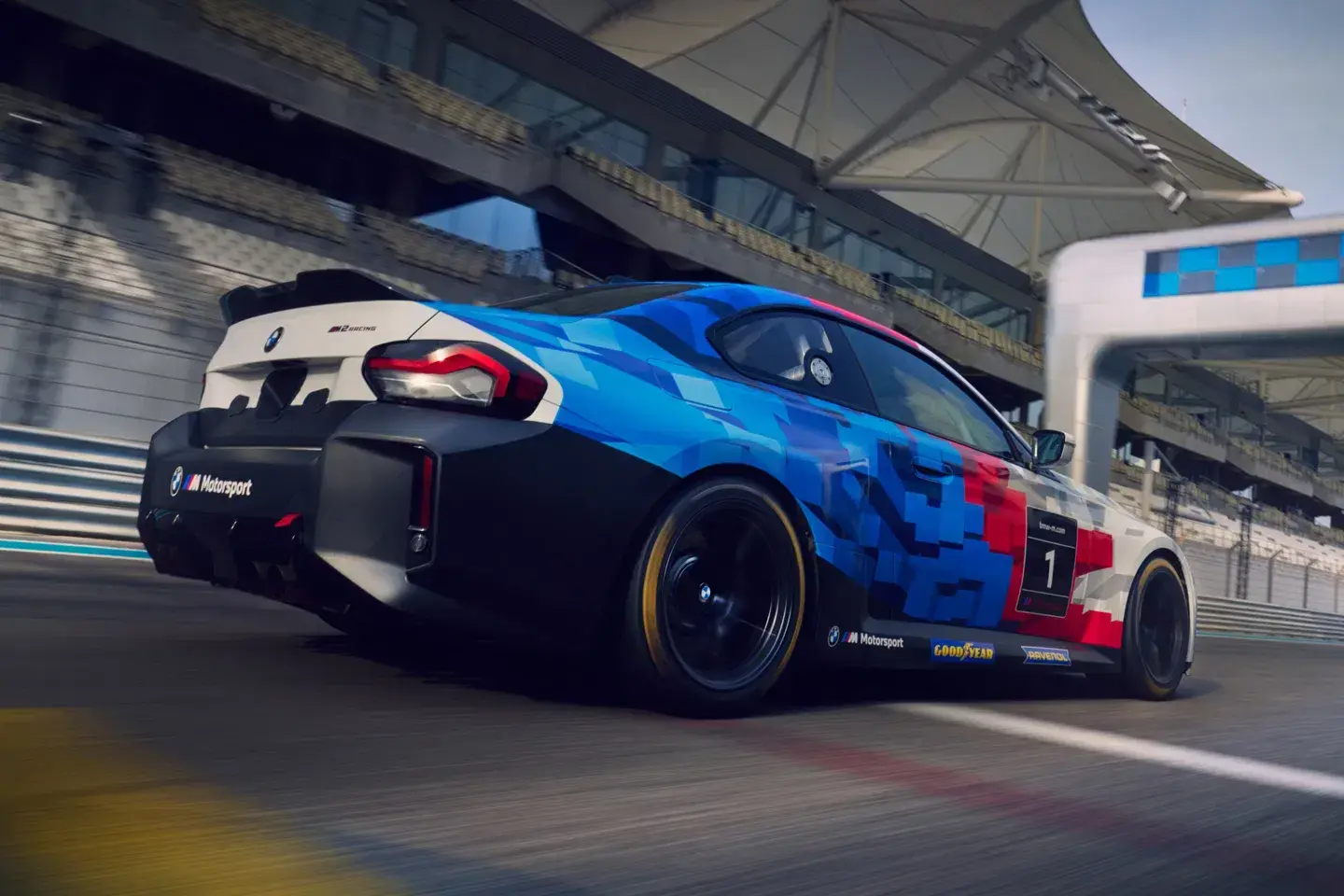
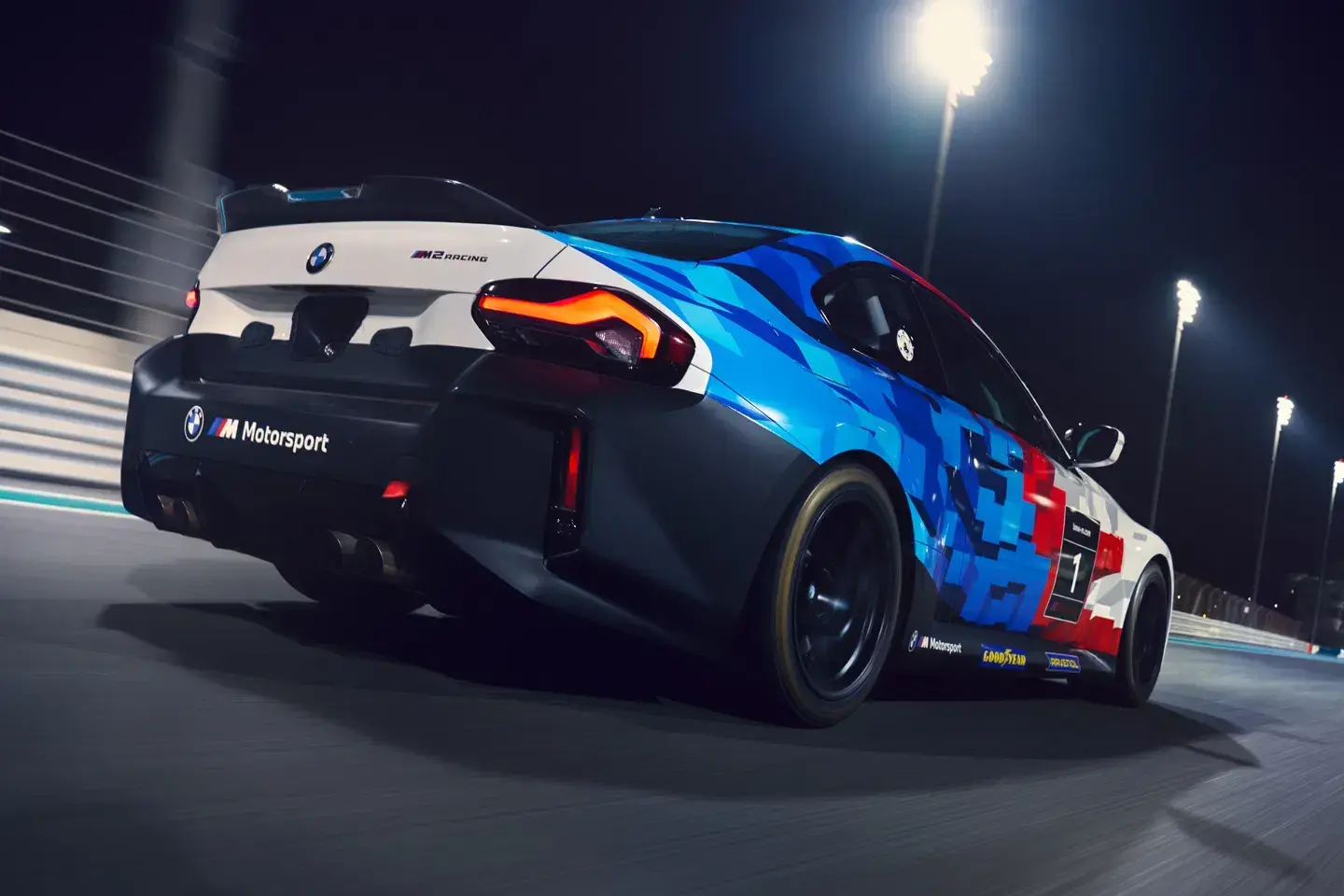 There’s also a regulatory advantage. In many racing series, engine displacement determines which class a car can compete in. By offering a smaller engine, BMW opens the M2 Racing to a broader range of championships, potentially reaching a much wider customer base than if they had stuck with the bigger straight-six.
There’s also a regulatory advantage. In many racing series, engine displacement determines which class a car can compete in. By offering a smaller engine, BMW opens the M2 Racing to a broader range of championships, potentially reaching a much wider customer base than if they had stuck with the bigger straight-six.
And it’s not just about cost or eligibility—the performance numbers are still strong. Thanks to substantial weight savings, the M2 Racing tips the scales at just under 1,500 kilograms—significantly lighter than the road car’s 1,725-kilogram DIN curb weight. This translates into better handling, improved tire longevity, and enhanced reliability during race weekends.
Björn Lellmann, Head of Customer Racing at BMW M Motorsport, summed it up perfectly: "The result is a high-performance race car that’s easy to drive, cost-effective to run, and built for pure enjoyment. The BMW M2 Racing offers a gateway to motorsport like never before, making competitive racing more attainable for a new generation of drivers."
With its smart engineering, focused mission, and accessible pricing, the 2025 BMW M2 Racing looks set to carve out a significant niche in the world of customer racing. Whether you're a seasoned track veteran or an ambitious amateur looking to make your mark, BMW’s latest creation could be the perfect ticket to real-world competition.
 BMW’s latest M2 has quickly won the hearts of enthusiasts worldwide, and it’s easy to see why. With its classic formula of a compact, rear-wheel-drive coupe, it taps deep into BMW M’s rich heritage. It also stands out in today’s market as a rare nod to old-school, combustion-powered excitement, and much of its character comes from the potent 480-horsepower S58 straight-six under the hood. Strip that engine away, and you remove a vital piece of the magic.
BMW’s latest M2 has quickly won the hearts of enthusiasts worldwide, and it’s easy to see why. With its classic formula of a compact, rear-wheel-drive coupe, it taps deep into BMW M’s rich heritage. It also stands out in today’s market as a rare nod to old-school, combustion-powered excitement, and much of its character comes from the potent 480-horsepower S58 straight-six under the hood. Strip that engine away, and you remove a vital piece of the magic. Unveiled during the DTM season opener and slated for a June 2025 sales launch, the BMW M2 Racing is designed specifically for private customer teams. Starting at €98,000 (excluding VAT) in Europe, it will be available exclusively through select BMW M Motorsport dealers.
Unveiled during the DTM season opener and slated for a June 2025 sales launch, the BMW M2 Racing is designed specifically for private customer teams. Starting at €98,000 (excluding VAT) in Europe, it will be available exclusively through select BMW M Motorsport dealers.
 There’s also a regulatory advantage. In many racing series, engine displacement determines which class a car can compete in. By offering a smaller engine, BMW opens the M2 Racing to a broader range of championships, potentially reaching a much wider customer base than if they had stuck with the bigger straight-six.
There’s also a regulatory advantage. In many racing series, engine displacement determines which class a car can compete in. By offering a smaller engine, BMW opens the M2 Racing to a broader range of championships, potentially reaching a much wider customer base than if they had stuck with the bigger straight-six.




